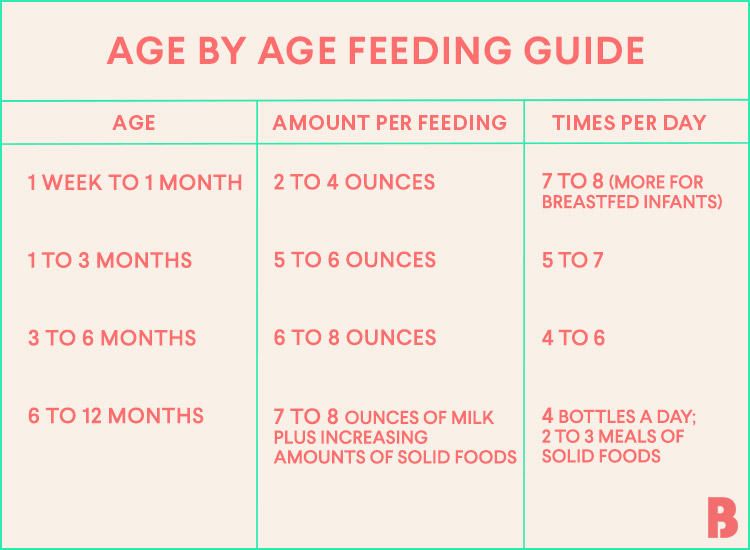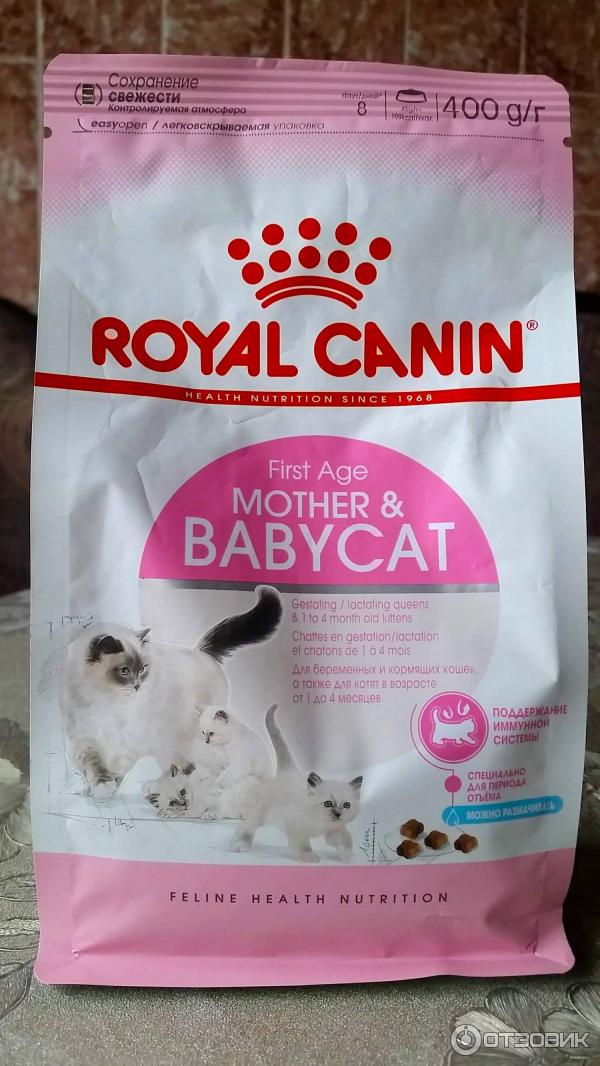How much milk do you feed a newborn baby
Formula Feeding FAQs: How Much and How Often (for Parents)
Whether you plan to formula feed your baby from the start, want to supplement your breast milk with formula, or are switching from breast milk to formula, you probably have questions.
Here are answers to some common questions about formula feeding.
How Often Should I Feed My Baby?
Newborns and young babies should be fed whenever they seem hungry. This is called on-demand feeding.
After the first few days of life, most healthy formula-fed newborns feed about every 2–3 hours. As they get bigger and their tummies can hold more milk, they usually eat about every 3–4 hours. As babies get older, they’ll settle into a more predictable feeding routine and go longer stretches at night without needing a bottle.
Talk to your doctor if you have concerns about feeding your baby, especially if your baby is very small, is not gaining weight, or was born early (prematurely).
How Can I Tell When My Baby Is Hungry?
Signs that babies are hungry include:
- moving their heads from side to side
- opening their mouths
- sticking out their tongues
- placing their hands, fingers, and fists to their mouths
- puckering their lips as if to suck
- nuzzling again their mothers' breasts
- showing the rooting reflex (when a baby moves its mouth in the direction of something that's stroking or touching its cheek)
Babies should be fed before they get upset and cry. Crying is a late sign of hunger. But every time your baby cries is not because of hunger. Sometimes babies just need to be cuddled or changed. Or they could be sick, tired, too hot or too cold, in pain, or have colic.
How Much Should My Baby Drink?
In the first few weeks, give 2- to 3-ounce (60- to 90-milliliter) bottles to your newborn. Give more or less depending on your baby’s hunger cues.
Here's a general look at how much your baby may be eating at different ages:
- On average, a newborn drinks about 1.5–3 ounces (45–90 milliliters) every 2–3 hours. This amount increases as your baby grows and can take more at each feeding.
- At about 2 months, your baby may drink about 4–5 ounces (120–150 milliliters) every 3–4 hours.
- At 4 months, your baby may drink about 4–6 ounces (120-180 milliliters) at each feeding, depending on how often they eat.
- By 6 months, your baby may drink 6–8 ounces (180–230 milliliters) about 4–5 times a day.

Watch for signs that your baby is hungry or full. Respond to these cues and let your baby stop when full. A baby who is full may suck with less enthusiasm, stop, or turn away from the bottle.
Why Does My Baby Seem Hungrier Than Usual?
As babies grow, they begin to eat more at each feeding and can go longer between feedings. Still, there may be times when your little one seems hungrier than usual.
Your baby may be going through a period of rapid growth (called a growth spurt). These can happen at any time, but in the early months are common at around:
- 7–14 days old
- between 3–6 weeks
- 4 months
- 6 months
During these times and whenever your baby seems especially hungry, follow their hunger cues and continue to feed on demand, increasing the amount of formula you give as needed.
Is My Baby Eating Enough?
At times, you may wonder whether your baby is getting enough nutrients for healthy growth and development. Babies who get enough to eat seem satisfied after eating and are regularly peeing and pooping.
Babies who get enough to eat seem satisfied after eating and are regularly peeing and pooping.
At your baby’s checkups, the doctor will review your baby’s growth chart, track your little one’s development, and answer any questions. Talk to your doctor if you have any concerns about your baby’s feeding and nutrition.
Reviewed by: Mary L. Gavin, MD
Date reviewed: November 2021
How Often and How Much Should Your Baby Eat?
By: Sanjeev Jain, MD, FAAP
One of the most common questions new parents have is how often their baby should eat. The best answer is surprisingly simple: in general, babies should be fed whenever they seem hungry.
How do I know when my baby is hungry?
For babies born
prematurely or with certain medical conditions, scheduled feedings advised by your pediatrician are best. But for most healthy, full-term infants, parents can look to their baby rather than the clock for hunger cues. This is called feeding on demand, or
responsive feeding.
This is called feeding on demand, or
responsive feeding.
Hunger cues
A hungry baby often will cry. But it's best to watch for hunger cues before the baby starts crying, which is a late sign of hunger and can make it hard for them to settle down and eat.
Some other typical hunger cues in babies:
Licking lips
Sticking tongue out
Rooting (moving jaw and mouth or head in search of breast)
Putting his/her hand to mouth repeatedly
Opening her mouth
Fussiness
Sucking on everything around
It is important to realize, however, that every time your baby cries or sucks it is not necessarily because he or she is hungry. Babies suck not only for hunger, but also for comfort; it can be hard at first for parents to tell the difference. Sometimes, your baby just needs to be cuddled or changed.
General guidelines for baby feeding
It is important to remember all babies are different―some like to snack more often, and others drink more at one time and go longer between feedings. However, most babies will drink more and go longer between feedings as they get bigger and their tummies can hold more milk:
However, most babies will drink more and go longer between feedings as they get bigger and their tummies can hold more milk:
Most newborns eat every 2 to 3 hours, or 8 to 12 times every 24 hours. Babies might only take in half ounce per feeding for the first day or two of life, but after that will usually drink 1 to 2 ounces at each feeding. This amount increases to 2 to 3 ounces by 2 weeks of age.
At about 2 months of age, babies usually take 4 to 5 ounces per feeding every 3 to 4 hours.
At 4 months, babies usually take 4 to 6 ounces per feeding.
At 6 months, babies may be taking up to 8 ounces every 4 to 5 hours.
Most babies will increase the amount of formula they drink by an average of 1 ounce each month before leveling off at about 7 to 8 ounces per feeding.
Solid foods should be started at about 6 months old.
Concerns about overfeeding or underfeeding your baby
Too full?
Babies are usually pretty good at eating the right amount, but they can sometimes take in more than they need. Infants who are bottle feeding may be more likely to overfeed, because drinking from a bottle may take less effort than breastfeeding.
Overfed babies can have stomach pains, gas, spit up or vomit and be at higher risk for obesity later in life. It's better to offer less, since you can always give more if your baby wants it. This also gives babies time to realize when they're full.
If you are concerned your baby wants to eat
all the time―even when he or she is full―talk with your pediatrician.
Pacifiers may be used after feeding to help sooth healthy-weight babies who like to suck for comfort, rather than nutrition. For babies who are breastfed, it's best to wait to offer pacifiers until around 3 to 4 weeks of age, when breastfeeding is well-established.
Trouble gaining weight?
Most babies will double their birth weight by 5 months of age and triple their birth weight by their first birthday. If your baby is having trouble gaining weight, don't wait too long between feeding―even if it means waking your baby. Be sure to talk with your pediatrician about how often and how much to feed your baby.
How do I know if my baby is getting enough to eat?
Daily diapers
A newborn's diaper is a good indicator of whether he or she is getting enough to eat. In the first few days after birth, a baby should have 2 to 3 wet diapers each day. After the first 4 to 5 days, a baby should have at least 5 to 6 wet diapers a day. Stool frequency is more variable and depends whether your baby is breastfed or formula fed.
Growth charts
During regular health check-ups, your pediatrician will check your baby's weight and plot it on a
growth chart. Your baby's progress on the growth chart is one way to tell whether or not they are getting enough food. Babies who stay in healthy growth percentile ranges are
probably getting a healthy amount of food during feedings.
Babies who stay in healthy growth percentile ranges are
probably getting a healthy amount of food during feedings.
Remember
Talk with your pediatrician if you have any questions or concerns about your baby getting the right amount to eat.
More information:
- Making Sure Your Baby is Getting Enough Milk
- Amount and Schedule of Formula Feedings
- Is Your Baby Hungry or Full? Responsive Feeding Explained (Video)
- Remedies for Spitty Babies
- Ask the Pediatrician: With the baby formula shortage, what should I do if I can't find any?
- Ask the Pediatrician: How should we feed our baby if we're running low on money?
-
Airplane Choo Choo: A Feeding Guide for Children (National Dairy Council)
About Dr. Jain:
Sanjeev Jain, MD, FAAP, is a Clinical Associate Professor of General Pediatrics and Adolescent Medicine at the University of Wisconsin School of Medicine and Public Health. Within the American Academy of Pediatrics, he is a member of the Section on International Child Health and the Wisconsin State Chapter.
Within the American Academy of Pediatrics, he is a member of the Section on International Child Health and the Wisconsin State Chapter.
The information contained on this Web site should not be used as a substitute for the medical care and advice of your pediatrician. There may be variations in treatment that your pediatrician may recommend based on individual facts and circumstances.
How Much Should a Newborn Baby Eat
Search Support IconSearch Keywords
Home ›› How Much Milk Should a Newborn Baby Drink?
Home ›› How much milk should a newborn baby drink?
↑ Top
Like every new mom, you're probably wondering, "How often should a newborn eat?" and “How many milliliters does a newborn baby drink at a time?”. A mother's body is designed to provide her baby with all the nutrients she needs, but every mom needs practical advice and confidence when it comes to how much milk a newborn should drink.
Whether you are breastfeeding, bottle feeding or a combination, here you will find all the information you need to know about how much food your baby needs to grow and develop properly.
Signs indicating that the child is hungry
Every mother has a wonderful maternal instinct, but we cannot guess the child's desires from the first time. Over time, you will learn your child's unique gestures and body movements, as well as signs that he is hungry. In the meantime, here are some of the most common signs that a child is hungry:
- turns head towards your breast or bottle;
- clenches;
- puts pens in mouth;
- pouts, smacks or licks lips.
If your child is showing any of these signs, they are probably trying to tell you it's time to eat. Ideally, your baby should be fed on demand when he is hungry. If you're breastfeeding, on-demand feeding is a good way to keep your milk supply going as your body will naturally respond to your baby's needs and continue to produce the required amount of milk. Bottle-feeding on demand can also be beneficial for your baby, as it allows him to self-regulate his feeding needs.
Bottle-feeding on demand can also be beneficial for your baby, as it allows him to self-regulate his feeding needs.
How much breast milk should a newborn drink?
So, how much should a newborn baby eat? A remarkable feature of each child is its uniqueness, so it would be wrong to feed the baby strictly according to the instructions. Don't panic if the recommendations below don't fit your own feeding schedule, but please contact your healthcare provider or pediatrician if you have any questions.
Although every baby is different, newborns typically eat every two to three hours, for a total of 8 to 12 meals a day.
How many milliliters does a newborn baby drink? At the very beginning, your body will only produce a small amount of yellowish and thick breast milk called colostrum. This milk is an ideal source of nutrients that your newborn needs, in addition, it has many immunological components. 1
How much milk does a newborn baby drink? Infants drink 30-60 ml per feeding, while this volume increases to 60-90 ml by two weeks of age. So don't worry if you don't feel like your body is producing much milk in those first few days after your baby is born! Feeding times will also vary, ranging from 10 to 30 minutes at the very beginning and then gradually increasing as your baby grows.
So don't worry if you don't feel like your body is producing much milk in those first few days after your baby is born! Feeding times will also vary, ranging from 10 to 30 minutes at the very beginning and then gradually increasing as your baby grows.
How much breastmilk the baby takes if bottle feeding
If you choose to bottle feed your baby from time to time, do so at the same intervals and for the same period of time as if you were breastfeeding. Pumping is a great option for breastfeeding your baby. It will allow you to separate from the baby if necessary and at the same time retain all the benefits of breastfeeding.
It's also important to get a bottle that helps make bottle feeding more natural for both you and your baby. For example, take a look at this Philips Natural bottle. Its wide, physiologically shaped nipple promotes a natural latch that is identical to that of a mother's breast, making it easier to alternate between bottle and breastfeeding.
Philips Avent
Natural Baby Bottle
SCF033/27General assessment /5
- Reviews reviews reviews
-{Discount -Value}
the child is full
How to understand that the child is already full? When breastfeeding or bottle feeding, look out for the following signs that may indicate that your newborn baby is full:
- baby closes his mouth;
- turns head away from bottle or breast;
- handles are not clenched and relaxed;
- falls asleep quickly.
If the baby shows signs of fullness, stop breastfeeding or bottle feeding, even if the bottle is not yet empty. 2
2
The right choice for you and your baby
Remember that every child is different and no one is as close to you as you are. Choose the feeding option that works best for you and your newborn, whether breastfeeding, bottle feeding, or a combination.
I understand
You are about to visit a Philips global content page
Continue
You are about to visit the Philips USA website.
I understand
how much milk a child needs for 1 feeding, the rate of formula and breast milk
The birth of a baby is a very joyful event. However, along with the joy of parents, many more questions arise. After all, it is so important that the baby grows up healthy and actively develops. One of the first such questions is usually: "How much does a newborn eat per feeding?" It would seem that feeding is such a natural process that it should not cause difficulties. However, most mothers are concerned that the baby does not have enough milk or, on the contrary, he overeats. How to strike a balance? Let's talk about it in this article.
However, most mothers are concerned that the baby does not have enough milk or, on the contrary, he overeats. How to strike a balance? Let's talk about it in this article.
Breastfeeding is good for both the baby and the mother:
- it helps the baby to get the substances necessary for growth, development and immunity and just satisfy hunger;
- promotes active contraction of the woman's uterus (under the influence of sucking movements) and a faster recovery process after childbirth.
About colostrum
Newborns eat little, their sucking reflex is just developing and is beginning to be put into practice. In addition, a woman's milk is not produced immediately. In the mammary glands at the end of pregnancy and in the first hours after childbirth, colostrum is formed. This is not exactly milk, it even outwardly differs from mature milk, and in its chemical composition it is similar to blood. This is a very valuable product. It is high in fat and contains immunoglobulins and antitoxins, which strengthen the immune system and protect the baby's body from infections. After a few days, colostrum is replaced by transitional milk. It is lighter, but also quite oily.
After a few days, colostrum is replaced by transitional milk. It is lighter, but also quite oily.
Read also: Complementary foods for artificial feeding
Consumption rates
This is important!
A mother should not worry that her baby was hungry, even if she applied it 10 times to the breast, but it seems that he did not eat almost a drop. The size of the stomach of a newborn is very small, so only about 10 ml is eaten per feeding. Thus, for the whole day the baby can drink up to 100 ml.
On average, milk arrives 3-4 days after birth and its quantity gradually increases. The stomach of the baby also grows. This means that the amount of milk consumed also increases. So, for the first day, a newborn can drink 10 ml per feeding, for the second day - 20 ml, and for the third - 30 ml. But remember that each organism is individual and there are no strict limits here. However, if by the 4-5th day of life the child's body weight does not increase, but only decreases (by more than 8%), then this requires the attention of a specialist.
There is a folk way to determine the rate of consumption of breast milk. You need to multiply the number of days that have passed since the day of birth by 10. But this method is inaccurate and has no scientific confirmation.
So how much should a newborn eat per feeding? The table shows the daily and one-time volume of milk by months for children under 1 year old.
| Child's age | Molo volume for one feeding (ml) | Milk rate per day (ml) |
| 3–4 days | 9000 9-60 | 200-300 9000 9000 9000 9000 9000 9000 9000 9000 9000 9000 9000 9000 9000 9000 9000 9000 9000 9000 9000 9000 9000 9000 9000 9000 |
| 1 week | 50–80 | 400 |
| 2 weeks | 9000-9 1/6 body weight | |
| 4 month | 180–210 9000 | 1/7 body weight |
| 7–12 months | 210–240 | 1/8–1/9 body weight |
It is not necessary breastfeeding, complementary foods are introduced at about 6 months. This means that the amount of milk consumed is reduced, giving way to more adult food.
This means that the amount of milk consumed is reduced, giving way to more adult food.
How to calculate the amount eaten
In terms of measuring the amount eaten, formula feeding seems to be just perfect. Here is a bottle with a scale, here is water, here is a measuring spoon. However, in terms of its benefits, formula milk will never be compared with breast milk. And besides, making measurements is not as difficult as it seems at first glance. Babies just need to be weighed before and after feeding on a baby scale. To ensure the accuracy of the result, you need to weigh several times a day. If nothing threatens the health of the baby, he does not look thin and pale, develops according to age, and the mother has enough milk, then monthly weighing in the clinic is usually enough.
Feeding schedule
For breastfed babies, there is a rule - to put the baby to the breast on demand. Previously, it was believed that it was necessary to maintain an interval of 3 hours, but now pediatricians agree that the breaks between feedings can be 1. 5–2 hours. This does not mean at all that the baby will overeat.
5–2 hours. This does not mean at all that the baby will overeat.
Video: Does a child get enough food in the first months of life?
Author: pediatrician, Ph.D. Komarovsky E.O.
The duration of one feeding is usually 15-30 minutes. Although there are deviations from the norm. For example, a woman has a lot of milk, and the child is full in 5-10 minutes. Or, on the contrary, there is not enough milk, and the baby can suck out the remains for a long time. Some babies just enjoy suckling and use their mother's breast as a pacifier.
What is important to consider
At first, mother and baby are only getting used to the ongoing changes, so the feeding regimen may not be ideal. However, you should adhere to the following rules.
- In the first couple of weeks, a woman needs a lot of dedication, because the interests of the child in the matter of satisfying hunger come to the fore.
 You can’t refuse food to a baby, even if it costs a sleepless night.
You can’t refuse food to a baby, even if it costs a sleepless night. - If there is any doubt that the child is undernourished or overeating, it is best to start monitoring the frequency of feedings. So, you need to mark the time at which the baby was really hungry, mark the intervals between feedings. This information may also be useful at the appointment with the pediatrician.
- It is impossible to establish a clear feeding regime, as with artificial feeding, especially in the first weeks after birth. Maintaining intervals of more than 2–3 hours during the day and 3–4 hours at night is highly discouraged.
- Do not try to force feed your baby. He is still too young to realize the need for food, and is guided solely by his feeling of hunger. If the baby persistently refuses the breast, you need to try to offer him to eat a little later. If the interval is too large, it is better to contact a specialist for advice.
- It is important that your baby latch on correctly.
 His mouth should capture not only the nipple, but also the areola. Thus, the milk will properly enter the mouth, and the woman will reduce the risk of cracked nipples.
His mouth should capture not only the nipple, but also the areola. Thus, the milk will properly enter the mouth, and the woman will reduce the risk of cracked nipples. - Soothers and bottles are not recommended for breastfed babies. Such products can reduce the intensity of sucking movements.
- It is best to give your baby only one breast at a time. In the mammary gland, fore milk is formed, with which the baby quenches his thirst, and hind milk, with which he "eats up", since it is more nutritious in composition.
- Hold the baby upright for about 10 minutes after each feeding. This helps to free the tummy from air and excess milk.
As a rule, with a normal feeding regimen and a sufficient amount of milk from the mother, the weight of the child increases by 500–600 g by a month.
Features of artificial feeding Now consider the situation when the mother does not have the opportunity to breastfeed the baby. In this case, it is necessary to choose a quality milk formula that will cover the nutritional needs.
 The pediatrician should help in this matter. The doctor will always take into account the peculiarities of the child's health and will be able to advise a regular or medicinal product. Do not forget that when breastfeeding, the baby makes more effort. He drinks milk gradually and feels full. When feeding with a formula, a strict dosage is needed, since usually saturation does not come immediately, and the baby may require a supplement that he does not really need (the feeling of hunger should disappear after a few minutes).
The pediatrician should help in this matter. The doctor will always take into account the peculiarities of the child's health and will be able to advise a regular or medicinal product. Do not forget that when breastfeeding, the baby makes more effort. He drinks milk gradually and feels full. When feeding with a formula, a strict dosage is needed, since usually saturation does not come immediately, and the baby may require a supplement that he does not really need (the feeling of hunger should disappear after a few minutes). Consumption rates
Almost all known mixtures require 8 or 7 meals a day with an interval of 3 hours. Night feedings are also included. When the baby grows up a little, it will be possible to skip them and sleep 5-6 hours until morning. With regard to formula milk, the principle of feeding on demand is not suitable. Therefore, it is necessary to observe both the dosage indicated by the manufacturer and the regimen.
It will not be difficult to calculate how much the baby eats for feeding.











